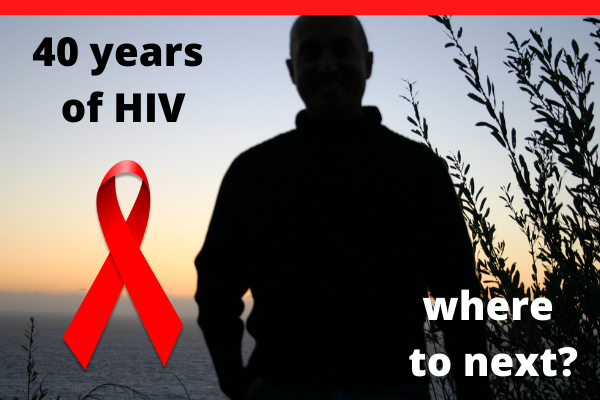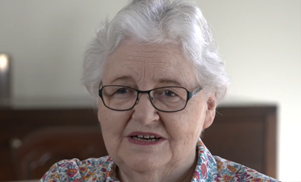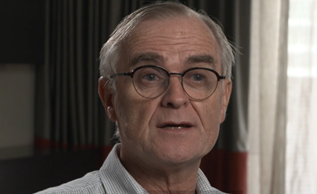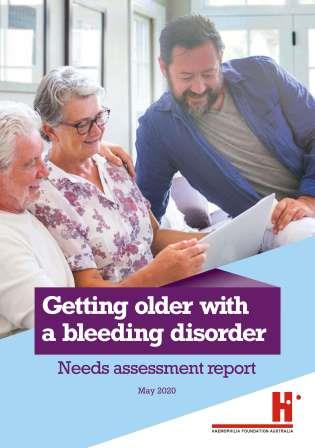In 2021 it was 40 years since the first official report of HIV.
Around the globe it was an opportunity to mark the anniversary, and to reflect on the HIV journey and where we are going with HIV as a community. World AIDS Day on 1 December became a focus for commemoration. Australian organisations adopted the national theme of 40 years of HIV – where to next?

HIV IN THE BLEEDING DISORDERS COMMUNITY
For the bleeding disorders community this is a deeply significant question.
Many have been affected by HIV. A significant number of people with bleeding disorders acquired HIV from their treatment products in the mid-1980s. Treatment product safety is now greatly improved and the risk of bloodborne infection from products derived from blood is extremely low. However, the impact of HIV has been profound: on the people who acquired HIV, and also on those who have been close to them – their partner, family, friends – on the health professionals who have cared for them, and on the bleeding disorders community generally.
Families who are new to the bleeding disorders experience may be unaware of this history. In a way this was a silent epidemic. For the bleeding disorders community, HIV was a traumatic experience and many experienced discrimination, or feared it. As a result, HIV was often not spoken about in the community and even within affected families.
However, HIV is an important part of our community’s history. It drew on the resilience that was already a strong element in this community and led to a resolve to respond as a community, taking on effective advocacy around safer treatments and providing support.
Today, with the advances in treatment, HIV is considered a chronic manageable condition and with effective treatment the viral load can be undetectable.1
Where to next with HIV? is a timely question for us as a community.
REFLECTIONS FROM PEOPLE LIVING WITH HIV
We are grateful to community members with haemophilia and HIV who shared their thoughts with us.
Anth McCarthy prepared a special reflection for World AIDS Day 2021:
For me, World AIDS Day has become a day of solemn remembering, joyous gratitude and proud celebration.
HIV transmissions are thankfully on the decline in Australia, but there is still a lot of work to do. If HIV, and now COVID, have been unable to focus our attention on existing social inequities, then nothing will. Intersectional communities of poor people, people of colour, women and girls, continue to carry the greatest burden of HIV globally. World AIDS Day is and should be for all of us because HIV is everyone's responsibility, and affects everyone.

Neil Boal gave a picture of where he finds himself today.
Complicated tablet regimes have simplified now and my general health is quite good. However, long-term survival is bringing up issues – but, between haemophilia and ageing, it's hard to separate what's what.
HIV is never far from my thoughts and COVID has added to this worry. I've been very fortunate but there's always a little concern with what lies ahead.
THE BLEEDING DISORDERS HIV HISTORY
In 1981 AIDS (acquired immune deficiency syndrome), a new health condition, was first reported in Australian newspapers and the first case of AIDS was formally diagnosed in 1982. In the mid-1980s the bleeding disorders community in Australia and internationally was deeply shocked when many people with bleeding disorders were diagnosed with AIDS after acquiring HIV through their plasma-derived clotting factor treatment products.
Jenny Ross AO, former HFA Executive Director, recalled the moment when one of the Haemophilia Treatment Centre Directors rang her with the news. She had expected to discuss the success of their recent conference and was stunned by what he had to tell her.

Jenny Ross
He said, I've got some dreadful news. And he told me then that the stored blood samples that people had given over the years had been taken to America by Ian Gust [leading Australian virologist] and had been tested and a third of them had the antibody to the virus HIV.
So, as you can imagine, that was pretty shattering. I went outside in the garden and stood under my magnolia tree and there was some particular piece of music playing. What was going to happen, how many people were going to be affected?
What would the future be? Would they progress to AIDS? And of course, personally, you wonder if it's going to be you as well. It's really hard to describe it. It was just overwhelming.
Former Director of the Queensland Haemophilia Centre, Dr John Rowell began his journey in haemophilia care as the new Haemophilia Consultant at Royal Brisbane Hospital in 1984. Reflecting on this time and the years that followed, he described the challenges of HIV and the tragic loss of life, and then the moments of optimism, with ground-breaking new HIV treatments becoming available in 1996 and advances in haemophilia treatment generally.

Dr John Rowell
In early 1984 things changed. The impact of HIV infection on the haemophilia community was becoming evident and this really devastated the community. It also devastated the doctors – the medical staff and nursing staff looking after people with haemophilia.
There have been some good times, when in the mid-90s the HIV care became better – improved. There have been significant improvements in the availability of [haemophilia] treatment products, product safety and the advent of home therapy – and more recently home delivery – and now HIV is more in the background.
In the mid-1990s HIV treatment changed dramatically: the introduction of combination antiretroviral therapies for HIV which combined drugs from different classes – known then as Highly Active Antiretroviral Therapy (HAART) – provided effective suppression of viral load and improvements in individual immune function.
As a result of the HIV epidemic, there were also significant changes to haemophilia treatment product safety. In Australia:
- from the mid-1980s new processes were introduced to eradicate bloodborne viruses (including HIV) when treatment products are manufactured
- in 2004 recombinant (synthetic) treatment product became available for all, as an alternative to treatment products made from the plasma in human blood.
HFA’s Getting Older report documented the ongoing impact of this epidemic on our community. While HIV treatment and bleeding disorders treatment product safety have improved greatly, there has been and continues to be trauma and health challenges for those who were diagnosed with HIV and now live with the consequences, and grief and sadness experienced by those who lost loved ones, friends and patients to HIV.
This time remains very painful for many people, families and carers in our community.
A SUPPORTIVE ENVIRONMENT
Living with a bleeding disorder can have its challenges and peer support is valued by many. The bleeding disorders community has an approach of pulling together. It is a diverse community with an aim of valuing everyone for their mutual support, inspiring stories, and shared lived experience.
There has been an ongoing conversation in the community about support for community members with HIV and those who have loved them and cared for them: what would they like to see in peer support?
They have said that acknowledging and hearing their experiences is immensely important. Creating an environment where our members with HIV can thrive also involves recognising and respecting individual preferences: some prefer not to dwell on the past; some choose to be private and not disclose their HIV; some find it very difficult to think about the future.
Our Foundations are committed to making sure their community activities provide a supportive and inclusive environment, which takes all of this into account.
WHERE TO NEXT?
In Australia HIV infection is now usually well-managed with treatment, but while some people with bleeding disorders and HIV are going well, others have more complex needs. HFA has outlined ways of addressing this in our Getting Older report recommendations. If you would like to read and understand more, we encourage you to read the sections on bloodborne viruses in our Getting Older report. (browse the full report – bloodborne viruses feature in several sections)

We recognise the very positive contributions people with bleeding disorders and HIV continue to make in our community, in spite of all their experiences: the inspiring optimism and generosity of individuals with HIV, not only providing support to their peers with HIV, but empathy, leadership and a way forward into the future for the whole community.
WHERE TO FIND MORE INFORMATION AND SUPPORT
If this has raised any questions or sensitive issues for you that you want to discuss further, you may wish to contact:
- The Haemophilia Social Worker, Psychologist or Counsellor at your Haemophilia Treatment Centre (HTC)
- A counsellor or someone else you can trust. Your HTC or your GP can give you a referral if you need one
- Lifeline – ph 13 11 14
REFERENCES
1. Bopage R, Couldwell D, Page M. Long-term management of antiretroviral therapy. June 2021. In Australasian Society for HIV, Viral Hepatitis and Sexual Health Medicine. HIV management in Australasia: a guide for clinical care. Accessed 18 February 2022.
